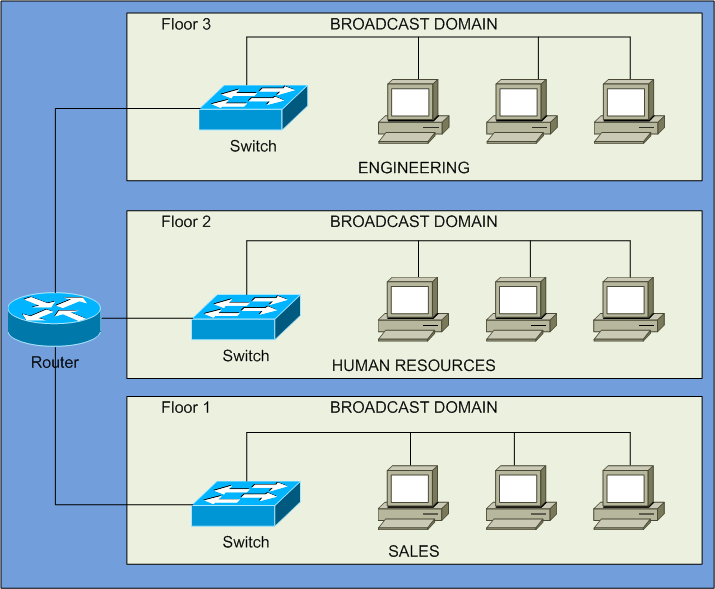OSI Model
Defines a networking framework for implementing protocols in seven layers
Control is passed from one layer to the next, starting at the application layer in one station, proceeding to the bottom layer, over the channel to the next station and back up the hierarchy
- Physical Layer
- Data Link Layer
- Network Layer
- Transport Layer
- Session Layer
- Presentation Layer
- Application Layer
Of the 7 layers, we are concerned with the bottom 3 layers. The top 4 layers are used more on host machines to support TCP/UDP, HTTP, other applications
OSI Layer 1
- This layer is the transmission media
- Category 5e and fiber optic cabling
- Radio signal in terms of wireless
- Performs transmission of raw bits
OSI Layer 2
- Data packets are encoded and decoded into bits.
- Divided into 2 sub-layers
- MAC (Media Access Control): Controls how hosts on the network gain access to the data and permission to transmit it
- LLC (Logical Link Control): Controls frame synchronization, flow control, and error checking
OSI Layer 3
- Routing and forwarding functions
- Handles end to end addressing
- Provides the mean for separate networks to talk to each other
- IP (Internet Protocol) is at this level
- Definition of Network Device Types
There are 5 general network devices
- Repeater
- Hub
- Bridge
- Switch
- Router
Repeater
- A Layer 1 device
- An electronic device to receive a signal on a port and retransmits it at a higher level or higher power
- Used when you need to go farther distances than the cabling will allow
- Usually has 2 ports (IN/OUT)
Hub
- A Layer 1 device
- A device that contains multiple ports
- Has no logic or “brain”
- Simply passes data out all other ports
- In simple terms, it is a multi-port repeater
Bridge
- A Layer 2 device
- Connects multiple Layer 2 segments
- Has logic or “brain”
- Learns what Layer 2 MAC addresses are associated with each port
- Receives frames destined for a particular MAC address and only sends the data out the correct
- port
Switch
- A layer 2 device
- Basically a multi-port bridge
- Learns MAC Addresses to Port mappings
- Doesn’t flood data out every port unless the MAC address hasn’t been learned
Router
- A Layer 3 device
- Connects multiple Layer 3 networks
- Uses Layer 3 addressing (IP addressing)
- Allows communication between different Layer 2 segments
- Breaks up broadcast domains
A broadcast domain is a network segment in which any network device can transmit data directly to another device without going through a router
What is a VLAN?
A virtual local area network (VLAN) is a group of hosts with a common set of requirements that communicate as if they were attached to the same broadcast domain regardless of their physical location.
A traditional LAN would require all users of the same requirements and same IP subnet (broadcast domain) be connected to the same equipment.
How VLANs work?
VLANs are identified by a number: Valid ranges 1-4094
On a VLAN-capable switch, you assign ports with the appropriate VLAN number
The switch then only allows data to be sent between ports with the same VLAN
Since almost every network is larger than a single switch, there needs to be a way to have traffic sent between two different switches
One way to do it is to assign a port on each switch with a VLAN and run a cable between the switches
Not very feasible or cost effective
For example, if there were 6 hosts on each switch on 6 different vlans, you would need 6 ports on each switch to connect the switches together. This would mean that if you had 24 different vlans you could only have 24 hosts on a 48 port switch




